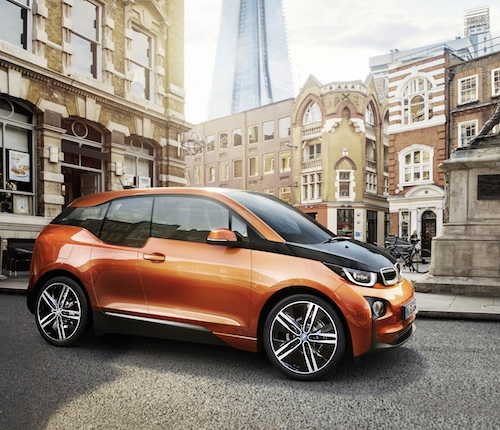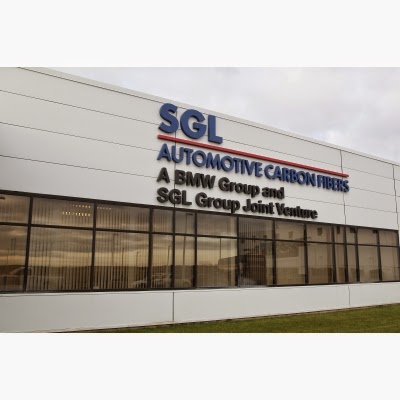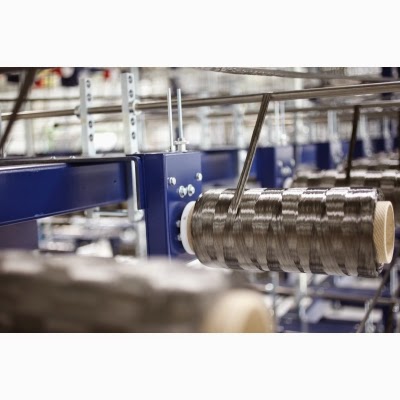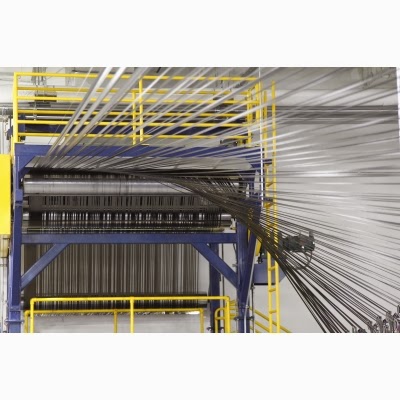The BMW i3 is essentially the precursor to the all future BMW vehicles, according to a recent Autocar article. Over the coming years BMW will adopt electrification with electric motors providing the primary motive force, and gasoline engines being relegated to a secondary role (if present at all) for generating electricity. Additionally, instead of welded steel cages BMW’s future cars will be made of other materials, including composites glued together with fancy super-powerful glue. That happens to describe the BMW i3.
It’s not just BMW, but all the automakers are talking about “lightweighting” meaning to work on the vehicle design paradigm to drastically reduce weight, thereby reducing fuel consumption requirements, and reduce the environmental impact and fuel requirements.
The Autocar article![]() focuses on BMW’s 3-series, 4-series and 5-series auto’s which make up 75% of the company’s sales.
focuses on BMW’s 3-series, 4-series and 5-series auto’s which make up 75% of the company’s sales.
The 2016 3-Series with eDrive will open the door to every BMW automobile (3 series and above) being a plug-in hybrid, at least.
Reducing weight is necessary to offset the added weight of the battery pack. That’s what BMW did with the i3, where the majority of the car’s construction is carbon-fiber-composites. The BMW i3 is the worlds first mass production carbon fiber car, made possible through a partnership with the SGL Group.
This carbon fiber material is manufactured by SGL, then shipped to BMW factories in Germany to construct automobile body parts.
The Autocar article claims BMW’s future vehicles will be constructed from mixed materials — “high-strength steels, aluminium in cast and extruded forms and some types of carbon fibre composites” — that are bonded using screws or glue as appropriate.
Mainstreaming of the technology is expected to begin with the 2018 3-Series.
On the electrification side, they’re rethinking the hybrid & electric drive train in a model that’s scalable from tiny cars to huge ones. It involves two electric motors, one for the front axle, the other for the rear. At which point one should be thinking of the dual motor Tesla Model S. Because electric motors can scale power up and down rapidly, within milliseconds, BMW will be able to do as Tesla has done and implement the best traction control system known to mankind.
Any combustion engine on future BMW vehicles will be attuned to a primary use of generating electricity. That means an engine design which doesn’t require complexity like turbochargers, to operate in a lean/efficient power band 90% of the time.
And, again, we see an echo of the BMW i3 here. The i3 is available as a BEV model (no gas engine) for people like me who are uber-hyper-sensitive about not burning gasoline, and as a REX model (with a tiny gas engine) for people who are willing to compromise on gasoline in order to use the gas station infrastructure for range extension. The i3 REX engine is derived from BMW’s motorcycle line, but reconfigured for the sort of usage model just described.
- Is there enough Grid Capacity for Hydrogen Fuel Cell or Battery Electric cars? - April 23, 2023
- Is Tesla finagling to grab federal NEVI dollars for Supercharger network? - November 15, 2022
- Tesla announces the North American Charging Standard charging connector - November 11, 2022
- Lightning Motorcycles adopts Silicon battery, 5 minute charge time gives 135 miles range - November 9, 2022
- Tesla Autopilot under US Dept of Transportation scrutiny - June 13, 2022
- Spectacular CNG bus fire misrepresented as EV bus fire - April 21, 2022
- Moldova, Ukraine, Georgia, Russia, and the European Energy Crisis - December 21, 2021
- Li-Bridge leading the USA across lithium battery chasm - October 29, 2021
- USA increasing domestic lithium battery research and manufacturing - October 28, 2021
- Electrify America building USA/Canada-wide EV charging network - October 27, 2021














